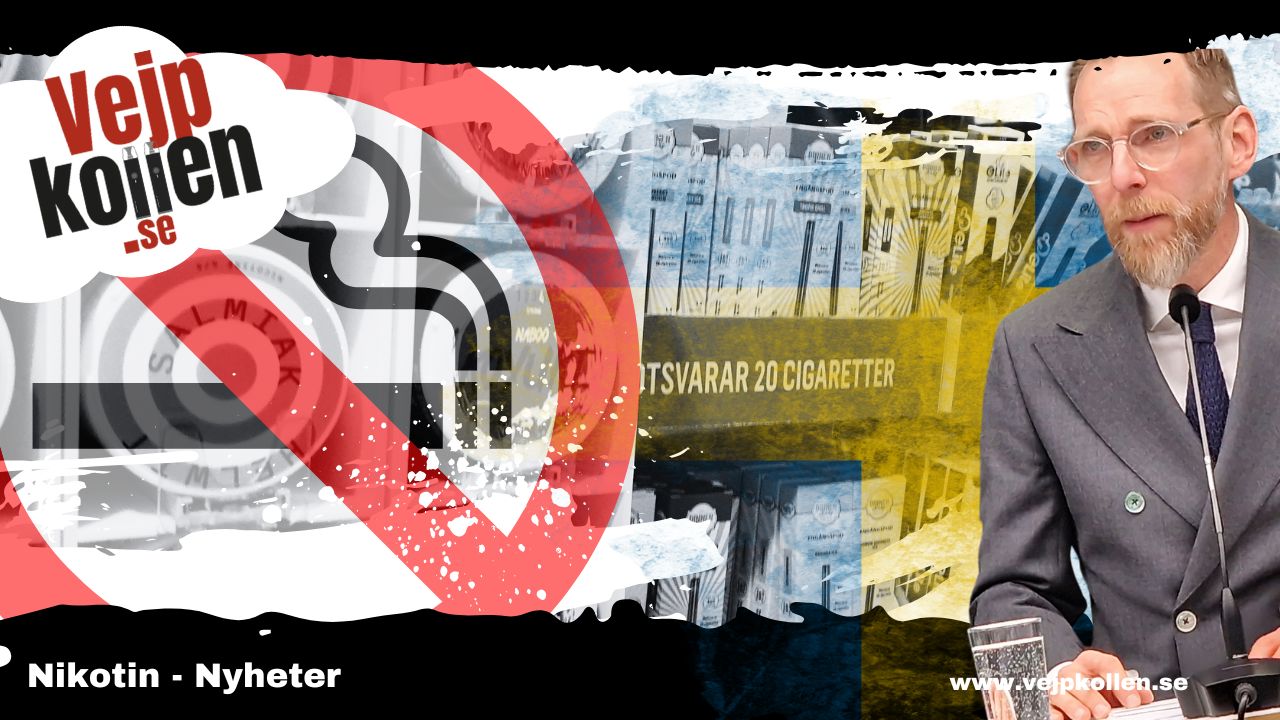The Swedish strategy for managing tobacco and nicotine use will change. In practice, this means that the Public Health Agency of Sweden will in future take into account the fact that different forms of nicotine use pose different risks of harm and prioritise measures accordingly. The Government has now instructed the Public Health Agency of Sweden to come up with proposals for how this change should be made by 15 November.
The background to the new directive is that the Swedish Parliament, like the current government, wants to introduce a a new harm reduction perspective in tobacco policy. This would mean that government action should focus primarily on reducing the harm caused by smoking, rather than the current focus on reducing use of all nicotine products regardless of different injury risks.
Snus is better than smoking
The issue was brought to a head after the previous Social Democratic government proposed that all nicotine products should be treated according to the same template and that snus and e-cigarettes should be treated just like cigarettes and smoking in terms of bans and restrictions. This proposal was voted down in Parliament.
"In practice, such a strategy means that it would be better for 20 Swedes to quit snus than for 10 smokers to quit smoking. This is not a strategy that reduces the harmful effects of nicotine use in reality," said Johan Hultberg, a member of the Moderate Party's Social Affairs Committee Parliament voted down the proposal in 2021.
FHM did not want to investigate properly
Since then, there have been many twists and turns around a new ANDTS strategy, with both delays and criticised investigations. Just last year, the Public Health Agency of Sweden a report which claimed to be unable to identify any differences in risk between different nicotine products. At the same time, the investigator admitted that almost 99 per cent of the available research on, for example, e-cigarettes had not been included in the risk assessment. A similar pattern emerged in the case of Swedish snus, where the Agency pointed out that much of the research is linked to the industry. The Agency therefore chose not to take a position on whether smoking poses more risks, either in relation to vejping or snus use.
Government cut snus tax anyway
Despite this, the Parliament chose to introduce a harm-minimising element in tax policy, whereby the tax on snus was reduced at the same time as the tax on cigarettes and smoking tobacco was increased substantially.
"The motive behind this is that there are significantly more Swedes who use snus than who smoke. I suspect that this is because the health effects of smoking are much more negative and tangible than the effects of snus use," said Oscar Sjöstedt, economic policy spokesperson for the Swedish Social Democratic Party, in connection with the the tax was presented.
Half of all snuff varieties under threat
Earlier this year, there was also a significantly larger investigation which pointed to several measures to reduce the use of all possible nicotine products - especially among young people. These included a ban on the retail sale of nicotine products, a ban on traders stocking unregistered nicotine products, and a comprehensive ban on nicotine use during school hours. Most controversial, however, is the proposal to limit the nicotine content of both brown and white snus. According to the rapporteur, the limit should be set at 12 milligrams per gram, which Sweden's largest retailer would lead to the disappearance of half of all snus products from shops.
Ignored damage minimisation
This investigation was also criticised for not addressing the harm-minimisation perspective that the Riksdag had asked the investigator to consider in several directives.
"We have taken a child perspective on these issues. And we have concluded that there is no reason to have different legislation in this area or to differentiate between the requirements we impose on these different products. Whether it's snus or cigarettes. I don't know if there are other reasons to have different regulations for these products in other areas," Inga-Lill Askesjö told Vejpkollen when The report was presented.
Government wants to go further
The government's directive to the Public Health Agency of Sweden will now pave the way for a new ANDTS strategy, where the assessment of the risks of different forms of tobacco use will be more guiding.
"By 1 May 2025, the Public Health Agency of Sweden must submit a simplified interim report on its mission to support policy in the areas of alcohol, drugs, doping, tobacco and nicotine, and gambling. The simplified interim report shall contain a general description of the work carried out by the authority during the financial year." writes the government in its decision.
Considers all nicotine use equally dangerous
At present, the Public Health Agency of Sweden is primarily working on preventive measures to reduce the use of all nicotine products, whether cigarettes, nicotine pouches or e-cigarettes. The Agency annually awards SEK 6 million for various non-governmental activities which in recent years has focused primarily on reduce the use of smokeless nicotine such as vejps and nicotine pouches
The Public Health Agency of Sweden has until 15 November to make proposals on how the changes to the strategy should be made.




